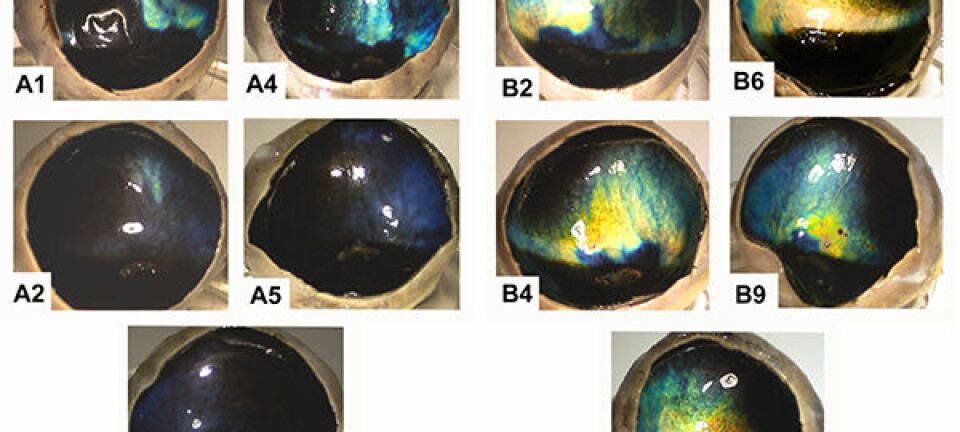
The Scientist’s Guide to Christmas
How do reindeers fly? Why does Santa not burn up when travelling at such high-speeds? ScienceNordic have answers for these and other Christmas-related mysteries.
It is that time of year again. The northern hemisphere is dark and days are short, whilst the southern hemisphere enjoys beach parties with Santa hats and fake snow.
Christmas is here! But what does science have to say about this festive time of year?
We delve into the scientific answers to the perplexing mysteries of Christmas: welcome to The Scientist’s Guide to Christmas.
How do reindeer fly?
The most pressing question must be: how do reindeer even get off the ground? After all, they need to overcome their own weight plus a sledge carrying Father Christmas, and presents for every child on planet Earth.
Surely the mechanics of reindeer flight cast doubt on the legend of Old Saint Nick?
Not according to Ian Stewart, emeritus professor of mathematics from Warwick University in the UK.
Interviewed by The Telegraph, Stewart explained just how Rudolf and friends manage to fly to. According to him, the reindeer reach such break-neck speeds that they establish enough vertical lift to fly.
He calls this phenomena so-called antlaerodynamics.
“Reindeer have a curious arrangement of gadgetry on top of their heads which we call antlers and naively assume exist for the males to do battle and to win females,” said Stewart to The Telegraph.
“This is absolute nonsense. The antlers are actually fractal vortex-shedding devices. We are talking not aerodynamics here, but antlaerodynamics,” he said.
Why is Rudolph’s nose so red?
Biologists discovered the secret behind Rudolph’s bright red nose in 2012, in a study published in the British Medical Journal.
They compared the nasal circulation of five healthy human subjects, two adult reindeer, and one patient with grade three nasal polyposis.
“Rudolph’s nose is red because it is richly supplied with red blood cells, comprises a highly dense microcirculation, and is anatomically and physiologically adapted for reindeer to carry out their flying duties for Santa Claus,” write the scientists in the British Medical Journal.
According to the biologists, this study has identified the intrinsic physiological properties of Rudolph’s legendary luminous red nose.
How does Santa cope with the heat of high-speed travel?
Assuming that Santa does get off the ground, he would need to travel at break neck speed to maintain flight and deliver presents to every child on Earth. This creates even more problems.
But the air-resistance created from such high-speed travel would generate so much heat that Old Saint Nick should burn up mid flight.
This begs the next question: how does Santa Claus avoid being incinerated during such high-speed travel?
According to Norwegian astrophysicist Knut Jørgen Røed Ødegaard speaking to Phys.org, the answer is simple:
"Santa obviously has an ion-shield of charged particles, held together by a magnetic field, surrounding his entire sleigh. This is how he solves the heat problem," he told phys.org.
Not enough time to deliver gifts to everyone
So Santa can fly, and even avoids being incinerated mid-flight. But there is still the issue of time: how can Santa deliver presents to all the world’s children is just a single night?
Scientists have postulated that Santa uses worm-holes or even string theory, in which he utilises 26-dimensions to effectively complete his tasks on Christmas Eve.
But another compelling theory came to light in 2008, according to physics teacher Robert Billing who documented an eyewitness account of the phenomena in Nature.
It is apparently a simple question of manipulating Planck’s constant.
A chance encounter with Santa one Christmas Eve, allowed Billing to investigate his sledge in detail. He discovered a big red lever, and a number of suspiciously labelled dials.
“The big red lever changed the value of Planck's constant for the sleigh. Changed it so that the sleigh could convert into a single photon. A photon with a wavelength of a few metres,” writes Billing in Nature.
“The sleigh would become a standing wave, rather like an electron orbit, all around Earth. No, all over Earth,” he writes.
Omnipotent visions: Naughty or nice
Children around the world can be manipulated into good behaviour, with the simple threat that Santa is watching.
But does Santa really know which of the world’s children are deserving of presents this year?
Surely such a database would require extensive computing capacity that would far exceed that of NASA.
Scientists have not figured this one out, but speculations include a global transmission network of winter hats (presumably summer hats in the Southern Hemisphere) capable of emitting children’s naughty or nice brain waves, or via a network of local secret service agencies, as reported by Phys.org.
Clearly, more research is needed.










